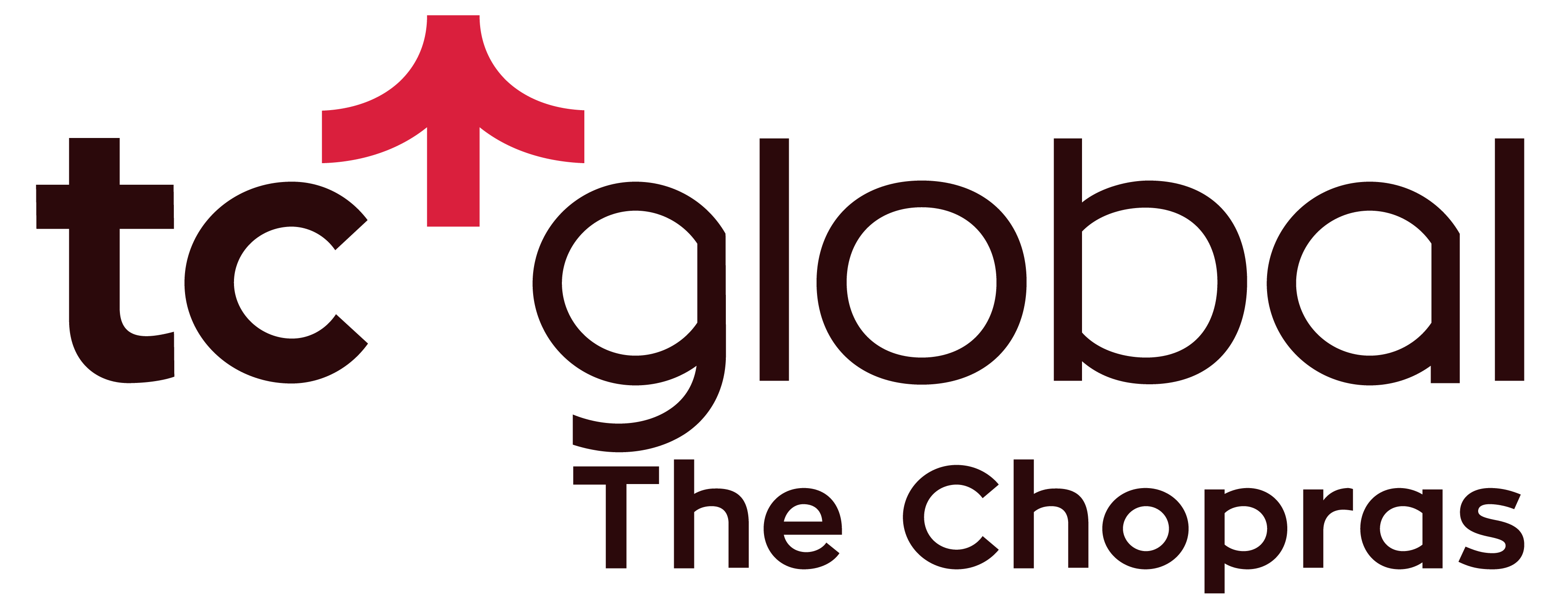UCSD vs UCSB – if these two reputed universities are on your list of universities, then here’s where you’ll find a comprehensive analysis of the two. UCSD and UCSB are both part of the University of California (UC) system. If you want to pursue higher education at the University of Cal, then the chances are that these two are on your options list. Deciding between the two can be quite a challenge. Do they function separately despite being within the same system? Is UCSB better than UCSD, or is it the other way around?
We look at it here. First, a quick summary (we look into each of the points in detail further below)
UC San Diego (UCSD)
UC San Diego, located in the coastal town of La Jolla, California, is a top-tier public research university known for its rigorous academics and innovative research. It’s known for its STEM programs, especially biological sciences, engineering, and computer science. It’s home to the prestigious Scripps Institution of Oceanography, which adds to its strength in earth and marine sciences. UCSD offers a collaborative and research-intensive environment, with ample opportunities for students to engage in groundbreaking projects. The campus vibe is a blend of academic seriousness and a laid-back coastal lifestyle. Despite its strong focus on academics and research, UCSD also offers a great student life with clubs, sports, and cultural activities.
UC Santa Barbara (UCSB)
UC Santa Barbara is a public research university on the coast of Santa Barbara – a stunning beachfront campus. It’s known for its programs in social sciences, biological and biomedical sciences, mathematics and psychology, to name a few. It’s home to several renowned research institutes, including the Kavli Institute for Theoretical Physics and the Institute for Energy Efficiency. UCSB is famous for its close-knit community and lively social scene. Like UCSD, it has many student organizations, events, and activities that create a sense of belonging. In terms of campus vibe, the fact that it’s located near a beach makes it a fun and lively campus!
UCSD vs UCSB: A Quick Glance

Is UCSB better than UC San Diego or vice versa? Which one has the higher rankings? Which is better in terms of placements and work opportunities? Out of the two, which public university provides better accommodation options? Which is better in terms of campus life?
First, a quick snapshot of each.
UC San Diego (UCSD)
Location: La Jolla, California
Founded in: 1960
Campus Type: Located close to the Pacific Ocean, offering stunning coastal views and a mild climate.
Campus Size: Approximately 1,200 acres
Student Population: Around 40,000 (undergraduate and graduate students)
Reputation and Ranking: UCSD is consistently ranked among the top public universities in the United States. It is known for its strong emphasis on research and STEM fields (more on this below)
Academics and Research: Offers a range of programs across six colleges. Some globally recognized courses are oceanography, computer science, engineering, and neurosciences—in addition to its STEM courses. UCSD is also home to major research institutions. It’s known for its academics, research facilities, contributions, and supportive environment.
UC Santa Barbara (UCSB)
Location: Santa Barbara, California
Campus Size: Approximately 1,055 acres
Campus Type: The campus is known for its beachfront location and a strong sense of community
Student Population: Around 26,000 (undergraduate and graduate students)
Reputation and Ranking: UCSB is known for its vibrant campus life and strong academic programs. It is also ranked highly among public universities in the U.S.
Academics and Research: UCSB offers a balanced academic experience with strong humanities and social sciences programs.
A quick word on some similarities, before diving into differences:
- Functioning – As mentioned earlier, UCSD and UCSB are within the University of Cal system and accountable to the UC President and California State Legislature. Regardless of that, rankings, acceptance rates, and academics differ.
- Emphasis on Research—Both are recognized for their research. They have well-equipped research centres and programs for all students.
How does one choose in the debate of San Diego vs Santa Barbara? Here’s a deeper look
Acceptance Rates
Both universities have low acceptance rates. According to their websites – in the Fall of 2023, UC San Diego had an acceptance rate of 25%, and UC Santa Barbara had an admission rate of 27.9% (a bit more). However, this varies annually depending on applicant numbers and available spaces.
Signature Programs
The Santa Barbara campus is known for its arts and psychology, while UC San Diego is known primarily for oceanography and STEM courses.
Rankings
There is a difference in the rankings of both universities (US News & World Report). Ranked at 20th (Best Global Universities), UCSD leads with a global score of 83.3%. On the other hand, UCSB is at 67th rank, scoring 73.3%.
| UC San Diego | UC Santa Barbara | |
| Established in | 1960 | 1921 |
| Ownership | Public Research Institution | Public Research Institution |
| Location | 9500 Gilman Dr | 5221 Cheadle Hall |
| City | La Jolla | Santa Barbara |
| Campus Setting | Urban | Suburban |
| Mascot | King Triton | The Gaucho |
| School Colours | Blue, Gold, Yellow | Blue, Navy Blue, Yellow |
| Academics | ||
| Ranking (US News List of National Universities, 2024) | 28 | 35 |
| Bachelor’s Degree Majors | 100 | 90 |
| Number of Master’s Degrees | 100+ | 50 |
| Popular Areas of Study |
|
|
| Fees and Scholarships | ||
| Average Tuition Fee for BA/ BSc per year | $13,752 | $14,391 |
| Average Tuition Fee for MA/ MS/ MBA per year | $15,102-$31,026 | Depends on Program |
| Average Financial Aid | ||
| Eligibility Criteria | ||
| Average High School GPA | 4.04-4.28 | 4.04-4.28 |
| Median SAT/ ACT Test Scores for admission | Do Not Consider | Do Not Consider |
| English Language Requirements | IELTS – 7 TOEFL-iBT – 83 |
IELTS – 6.5 TOEFL-iBT – 80 |
| Acceptance Rate | 25% | 27.9% |
| Student Population | ||
| No. of undergraduate students in 2022-2023 | 41,500 | 25,034 |
| No. of graduate students in 2023 | 3,816 | 3000 |
| Average Starting Salary of Graduates | Depends on the Course | Depends on the Course |
| Student Faculty Ratio | 26:1 | 17:1 |
| Average Class Size | 47% of Classes have fewer than 20 Students | 73% of Classes have fewer than 30 Students |
UCSD vs UCSB: Academics

If you are a prospective student, academics are the first thing you should consider. Is UC Santa Barbara better than UC San Diego? Look at which university out of the two stands out in terms of academics.
UCSB aims to provide students with a high-quality education. It is well-known for its humanities and art courses. They strongly prioritize sustainability/environmental science.
On the other hand, UCSD continues to offer diverse academic courses and programs—the most popular are STEM courses, physics, human biology, computer science, and many more. Several research opportunities (especially in science and engineering) are available for undergraduate and graduate students.
Overall and Subject Ranking
Both schools are globally recognized and considered as top-leading ones. They are ranked separately, though both are part of the UC system. Ultimately, there is a perception that UCSD has higher rankings than UCSB. Is it correct?
Well, the answer is yes. Compared to Santa Barbara, San Diego has high rankings (nationally and globally) as per three ranking indicators – QS World University, TIMES Ranking, and US News Ranking opposed to UC Santa Barbara.
| Global Rankings | |
| University of California San Diego | University of California Santa Barbara |
| 20 (US News & World Rankings) | 67 (US News & World Rankings) |
| 34 (THE Rankings) | 69 (THE Rankings) |
| 62 (QS World University Rankings) | 163 (QS World Universities) |
| Subject Rankings* (US Rankings) | |
|
|
*Note: We have mentioned only eight top-ranked subjects from the universities. You can check out US News to know about other subject rankings.
Constituent Schools & Colleges
UC Santa Barbara
- College of Letters and Science
- College of Engineering
- College of Creative Studies
- Bren School of Environmental Science & Management
- Gevirtz Graduate School of Education
- Graduate Division
UC San Diego
- Jacobs School of Engineering
- Division of Biological Sciences
- Division of Physical Sciences
- Division of Social Sciences
- Rady School of Management
- School of Global Policy and Strategy
- Skaggs School of Pharmacy and Pharmaceutical Sciences
- School of Medicine
- Scripps Institution of Oceanography
Key Dates for Application
Even though both campuses come under the UC umbrella, they will differently access application forms according to policies. If a student gets admission to one campus, it does not mean the student will qualify for another UC campus. These are the steps:
Application Period:
- Opens: Early November
- Closes: November 30th
Notification of Admission:
- Freshman: Late March to early April
- Transfer: Late April to early May
Acceptance Response Deadline:
- May 1st
Please visit the websites individually to receive insights on the college admissions process.
Semester vs. Quarter System
UCSD & UCSB operate on the quarter system and not the semester. The academic year is in three terms (fall, winter, and spring). Each quarter lasts up to 10 weeks. The system accelerates your learning process and enables students to take courses throughout the year.
Top 3 Courses at the University of California San Diego
1. Biotechnology and Applied Microbiology
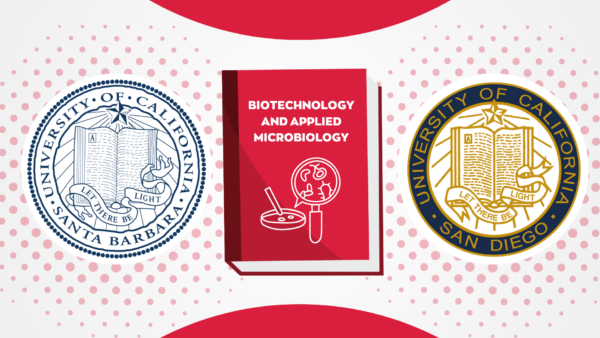
The Department of Bioengineering in the Jacobs School of Engineering is highly sought after, and gets thousands of applications from students across the globe. Ranked 4th in the country by US News and World Report, their biotech and microbiology programs prepare students for careers and higher education in this fast-growing field. The curriculum emphasises on a strong engineering and biochemical foundation, allowing students to branch out into niche areas.
2. Medicine
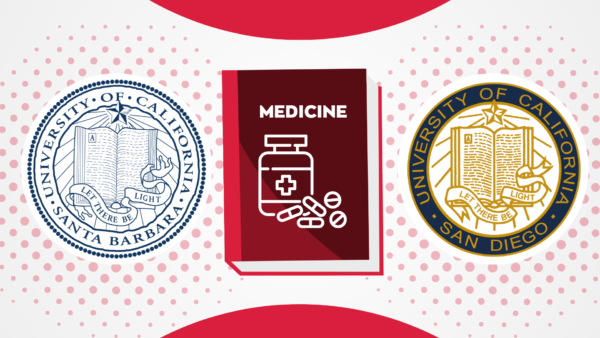
Ranked 5th among public medical schools and 13th overall for NIH Research funding, the UCSD Medical School is renowned for its academics, research excellence, a sense of community and its commitment to health equity. The school offers hands-on learning environments including a simulation centre, a Centre for the Future of Surgery, and a student-run free clinic. Among the numerous specialisations offered, their courses on gastroenterology and hepatology ranks first with a subject score of 100, according to US News and World Report. In addition to medicine, UCSD’s psychology and cognitive sciences program are also highly ranked.
3. Computer Science
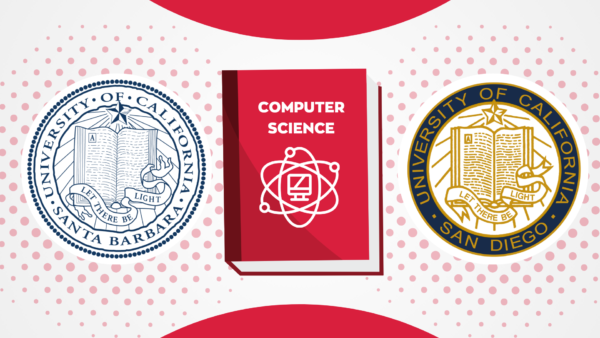
Computer Science programs at UCSD are ranked 36th by US News and 51st in the world by QS WUR for 2024. Offering both undergraduate and graduate programs, students of computer science at UCSD get to work with world class research centres at UCSD including the California Institute of Telecommunications and Information Technology (Calit2), the San Diego Supercomputer Center (SDSC), the Center for Networked Systems (CNS), the Center for Wireless Communications (CWC), and many others.
Top 3 Courses at the University of California Santa Barbara
1. Environment/Ecology

Bren School of Environmental Science & Management is ranked the 20th best university for environmental and ecology courses, with a subject score of 87% (US News 2024). The School has renowned faculty in environmental and ecology sciences and related fields.
UCSB’s coastal location gives students unique opportunities to learn about diverse ecosystems (wetlands, coastal habitats, forests, marine environment, and many more).
It also focuses on community engagement and building skills (communication and teamwork) that introduce them to real-world challenges.
2. Physics
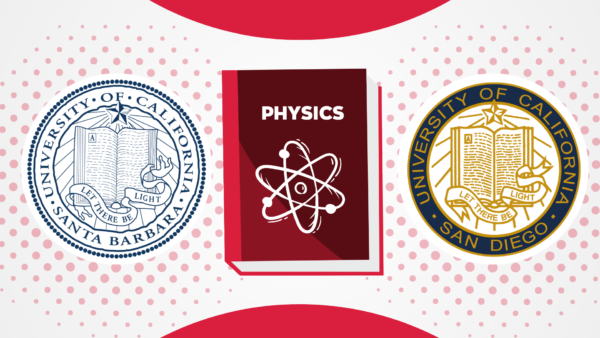
The Physics Department at UC Santa Barbara has a subject score of 82.1 and a ranking of 22 (Best Global Universities for Physics). It boasts recognized professional leaders and Nobel laureates, bringing exceptional learning opportunities. Located in Santa Barbara, UCSB is a great place for those who want to learn physics.
UCSB’s physics department is known for its faculty, exceptional research opportunities, interdisciplinary collaboration, and supportive community—to name a few.
3. Space Science
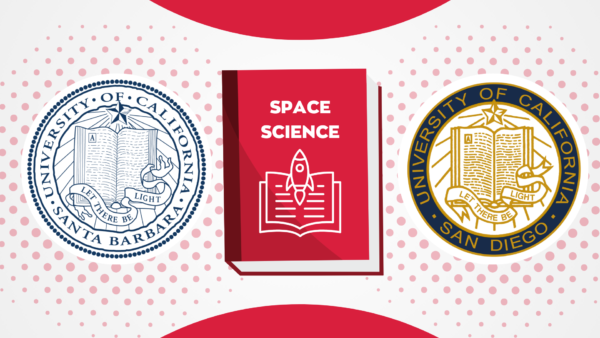
UCSB is ranked #30 in the Best Global Universities for Space Science, with a subject score of 73.3%, as per US News 2024. It’s an interdisciplinary programme that draws principles from physics, astronomy, planetary science, and engineering. It helps students collaborate and partner across departments.
The campus is also home to well-equipped laboratories supporting practical learning for students. It prioritizes extracurricular activities and experiences, allowing students to follow their interests in space science.
Notable Faculty, Alumni, and Research Facilities
Notable Faculty
Both universities boast faculty members, experts, and Nobel Laureate winners. They have contributed to academic success and overall outlook. Both have a long list of notable faculty.
UCSB has notable faculty, such as Shiji Nakamura (Invention of LEDs—Physics), John Bowers (Nanotechnology, engineering, optics, quantum), and Alan J Heeger (Discovery of conductive polymers—Chemistry).
UCSD also has brilliant faculty, such as Sangeeta Bhatia (Biotechnology), Shirley Meng (Electrochemistry and Nanotechnology), and David Kleinfed (Neuroscience and Physics of the Brain).
(as of May 2024)
Alumni
UC Santa Barbara and San Diego have produced distinguished networks across domains ranging from physics to business and technology to entertainment.
UCSB has an extensive network of over 250,000, which continues to develop with every passing year. Some known alumni are Michael Douglas (American actor), Benjamin Bratt (TV actor), Jack Johnson (Musician), Lisa Ling (Journalist), and many more.
Compared to Santa Barbara, UCSD has a smaller alumni of over 240,000 but a more diverse one. Some known personalities include Mike Judge (Actor), Andrea Wong (Businesswoman), and Terry J Hart (Engineer).
Research Facilities
Both universities are research powerhouses, offering several opportunities for every student. However, they specialize in different niches.
UCSD emphasizes biotechnology and life sciences and is home to prestigious research centres like Scripps Institution of Oceanography, Qualcomm Institute, Kavli Institute for Brain and Mind, Center for Energy Research, and more. In research quality and environment, UCSD scores 97.6 and 78.4, respectively (TIMES Ranking), with 34th rank.
On the other hand, UCSB has a strong presence in environmental and life sciences. It is home to research centres like Material Research Laboratory, California NanoSystems Institute, Marine Science Institute, and more. Compared to UCSD, Santa Barbara’s research quality and environment are slightly low. Santa Barbara is ranked 69 for research, with 96.9 (quality) and 64.7 (environment) scores.
UCSD vs UCSB: Fees and Scholarships
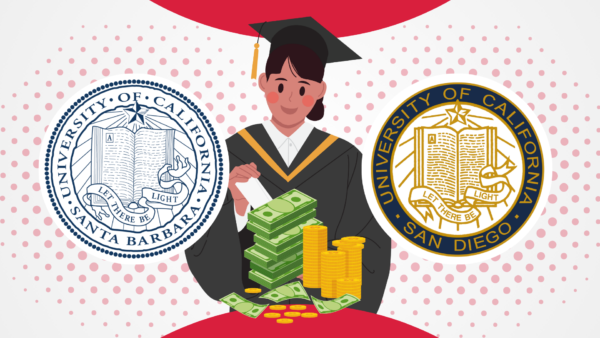
Finance is another crucial step when choosing between two universities. As a prospective student, you should know and search about everything from creating a budget to applying for financial aid.
Through a table, it will be easier for you to understand the differences between the two:
| UCSD | UCSB | |
| Annual Tuition Bachelor’s | $14,733 (residents) $41,487 (international) |
$14,951 (residents) $29,754 (international) |
| Annual Tuition Master’s | $17,487 (residents) $32, 589 (international) |
Depends on the program |
| MBA Tuition | $54,160 (residents) $66,405 (international) |
$30,400 (residents) $56,700 (international) |
| Housing (yearly, room and board) | $14,261 (residential halls) $13,499 (apartment) |
Varies on the program and status of the students |
| Scholarship Type | Chancellor’s Associates UCSD Regents Alumni Subject-specific California Dream Act UCSD Undergraduate Research Diversity Scholarships Study Abroad Scholarships |
Stapelmann Scholarship Gunther Family Cal Grant A and B Subject-specific |
| Eligibility | Varies for each type | Varies for each type |
| Average need-based aid | $28,830 | $19,963 |
| Percentage of undergrad students receiving some form of financial aid | 60% (3,263 out of 6,011) | Not given on the website |
| Admission Decisions | Need-blind | Need-blind |
| Demonstrated Need Cover | 85.4% | 82.8% |
Notes:
- The tuition fee of UCSB is calculated based on residency status. In-state students will have less tuition fees than out-of-state students.
- UCSD tuition fee is calculated based on the units taken and residency status. The total cost is calculated by multiplying the tuition per unit by the number of units.
UCSD vs UCSB: Student Life and Post-Graduation Opportunities

After comprehensively understanding the academics and fees/scholarships, let us look at other factors (location, campus settings, student population, housing, etc.) that will answer the question: Is UCSD better than UCSB?
Location
UCSB & UCSD offer the benefits of being in a coastal location and providing unique experiences. However, students might consider climate, culture, and recreational activities while comparing both.
UC San Diego
Situated near the Pacific Ocean and surrounded by coastal landscapes, the University of California San Diego is in La Jolla. In terms of climate, it experiences a Mediterranean climate with temperatures ranging between 60-70 Fahrenheit. San Diego is well known for its yearly events like Comic-Con and numerous other cultural activities. For students who are adventure seekers, the city provides options to bicycle, hike, and surf.
UC Santa Barbara
UCSB is located in Santa Barbara (a coastal city), between the Santa Ynez Mountains and the Pacific Ocean. It also witnesses a Mediterranean but a slightly warmer climate, with mild rainfall. Santa Barbara is known for music festivals and theatre shows via a talented artistic community. Trekking, park-hopping, and beach activities are some options for recreational activities.
Campus
UC San Diego
Spanning over 2000 acres of land, the UCSD is the tenth member and one of the biggest campuses in the UC circuit. This campus consists of 761 buildings occupying 1,15 acres. UC San Diego Park and Market have recently opened in addition to the campus. It is a 66,750-square-foot building that will eventually serve as a cultural hub for the region.
Home to more than 40,000 students, UCSD strives to be supportive and create an inclusive community with equal opportunities for extracurricular activities (music, dance, theatre, comedy, and entertainment). In 2017, Ashoka U designated UC San Diego as a Changemaker Campus for its huge contribution towards social innovation education.
UC Santa Barbara
Spread across 1,055 acres, USCB seamlessly integrates natural beauty with academic excellence. It offers a more intimate campus setting compared to the San Diego campus. It is the only university in the USA that owns a beach and manages Coal Oil Point Natural Reserve.
Due to its coastal location, this campus boasts a growing culture but a laid-back attitude. UCSB is particularly known for its contributions towards sustainability and innovation. Students of all backgrounds are encouraged to participate in research and pursue studies in such a vibrant campus.
Student Population
UC San Diego (UCSD) and UC Santa Barbara (UCSB) contrast in population size, each contributing to a unique campus atmosphere and experience.
UC San Diego
In Fall 2023, the university had a total student population of 43,381. Of those, 33,096 were undergraduates, and 9872 were graduates. International students from all over the world make up 19% of the total population. The student ratio is 44:55 (females to males). The university’s size is reflected in its diverse community, offering a range of academic programs, collaborative learning, and extracurricular opportunities.
UC Santa Barbara
The total enrollment in Fall 2023 was 25,034 – 23,460 undergraduates and 3000 graduates. About 18% of the total student body is international, and the female-to-male ratio is 54:46. Due to fewer numbers, students can enjoy strong bonds with peers and faculty.
Housing
Both universities provide accommodation options based on the student population’s needs and campus atmosphere. The universities prioritize offering on-campus housing options, with differences in amenities, availability, meal plans, costs, and rules. Let us look at them separately.
UC San Diego
Residential halls, apartments, and themed housing communities are options for on-campus living—students have plenty of choices to accommodate their lifestyles. Students prefer living in residential halls, as they offer more independent living spaces with amenities.
If the student is interested in a particular identity, they can also be accommodated in a themed housing community as it creates niche communities where students can bond.
UC Santa Barbara
Residential halls at UCSB can accommodate students wanting a traditional dormitory experience. Students wanting a bit of independence can opt for apartment living. The accommodation options are within proximity to dining facilities and buildings.
Both universities also assist off-campus students in finding accommodation. Such students want to enjoy living in other surroundings near the university and take part in many activities to build their social life.
Sports & Extracurriculars
Sports – Both universities demonstrate differences in strengths and areas of excellence, though they are part of the NCAA Division I Athletics.
The soccer teams (men & women) of UCSB have notable achievements and NCAA tournament appearances. On the contrary, UCSD dominates in water sports like swimming, diving, and water polo – The Tritons aquatic programs earned many conference titles. The athletes are known for their competitive urge.
Extracurriculars – Both schools offer a wide variety of student organizations and clubs.
UC San Diego
There are 600 registered clubs and organizations under the UCSD circuit, including the Student Sustainability Collective, the Valor Student Veterans Association, and the Pre-Health Society. It focuses on science and technology, with many clubs dedicated to robotics, engineering, and computer science. Additionally, UC San Diego has a Greek life community, with over 20 fraternities and sororities on campus.
UC Santa Barbara
There are over 500 registered student organizations, Some notable extracurriculars at UC Santa Barbara include the Outdoors Club, the Queer Commission, and the Model United Nations. It is known for its strong emphasis on the arts, with music, theater, and dance groups available for students to join. UC Santa Barbara has a smaller Greek life presence.
Internship Opportunities
Both universities provide internship opportunities in different domains – giving students real-world exposure. There are differences between Santa Barbara and San Diego in terms of geography, industry ties, stipend, and programs offered.
UCSD
The university is situated in the San Diego region and close to Qualcomm and the biotech cluster in La Jolla – providing internships in technology, biotech, and healthcare.
UCSB
Given its coastal location near Santa Barbara, there is more emphasis on doing environmental science, marine biology, and engineering internships.
Work Opportunities
Both UCSD and UCSB provide excellent placement and graduate employment opportunities.
UCSD
It provides industry partnerships and job opportunities, especially in biotech and healthcare, and has been nationally ranked 36 for graduate employability by the Times. UCSD is well-known for its extensive career services known as GPSCareers. It is a career management tool for UCSD students as they can browse and apply for current job and internship postings.
It also boasts an impressive alumni network designed to assist graduates in securing jobs and advancing their careers by providing career guidance and networking opportunities. Learn more about its employment data here.
UCSB
According to their website, UCSB has partnerships with giants like Google, Apple, and Microsoft. Thus, approximately 93% of grads are well-prepared for jobs. UCSB students get apt opportunities in engineering and environmental sciences. Continuous job fairs and career counseling contribute to graduates’ success.
Summary

UC Santa Barbara vs UC San Diego – choosing the best college is quite a task to decide between the two as both are highly recognized universities, having their academic strengths and an extensive network. What it comes down to is which college experience better fits your preferences.
Consider UC San Diego if
- You want to pursue optics, biology, and STEM in a reputed public university
- You want to live and study in an urban setting (La Jolla).
- You enjoy living in a Mediterranean climate
- You want to be a part of a highly recognized university with impressive rankings (higher ranked than UCSB)
- You want to be a part of a slightly smaller but diverse alumni network of 240,000
- You want to live in residential halls and theme-based community
- Water sports interest you
- You want to experience a multicultural environment with strong Greek influence (20 fraternities and sororities)
Consider UC Santa Barbara if
- You are interested in pursuing marine sciences, psychology, and humanities courses (arts, literature, journalism)
- You want to experience living in a suburban setting (Santa Barbara)
- You enjoy living in a Mediterranean climate (but slightly warmer)
- You want to be a part of a highly recognized university (lower ranked, though)
- You want guidance from an extensive 250,000 alumni
- You want to live in a traditional dormitory (in proximity to the university)
- Playing soccer interests you
- Being in a multicultural environment is something you want (less Greek influence)
While these can be factored into your decision, the ultimate call rests on whether the course curriculum and the learning outcomes meet your career plans. The most significant part of your research is to compare courses, syllabi, electives, faculty, and research facilities of your preferred degree program, speak to current students, and then decide on which school better suits your needs.
We understand that becoming an international student can be very exciting, but the prep and paperwork of it all can get overwhelming. The easiest way to reduce your stress is to sign up with TC Global. We simplify international education, learning, and mobility by connecting students, universities, and a global community on a single platform where there are over 1000+ education providers and over 80,000+ courses.
Our platform enables students to study anywhere in the world in just a few steps. From search and discovery and finding the right course fit for you, to applications, visas and departure – we see you through it all.
To move forward with us, download our app or visit tcglobal.com and sign in to create an account on our student platform and onboard with us in quick, easy steps.! ?Then simply set up a visit Calendly.com/tcglobal to pick a Relationships Team closest to you and choose a slot to meet with a Relationship Member.
Be it UCSD vs UCSB, our experts will be with you every step of the way to help you decide.
Let’s shape your future together.
You May Also Like
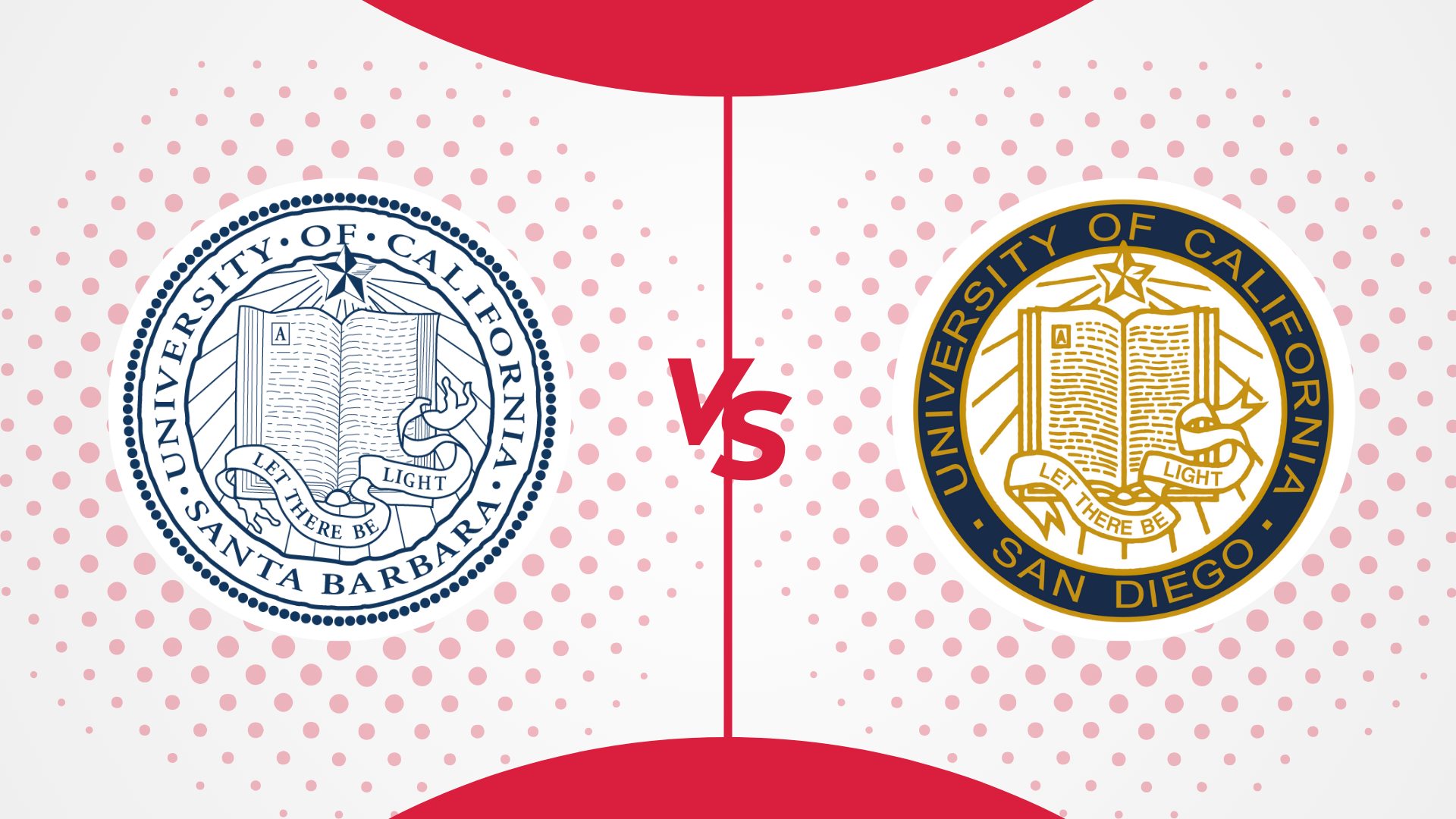
Compare more universities in USA
-
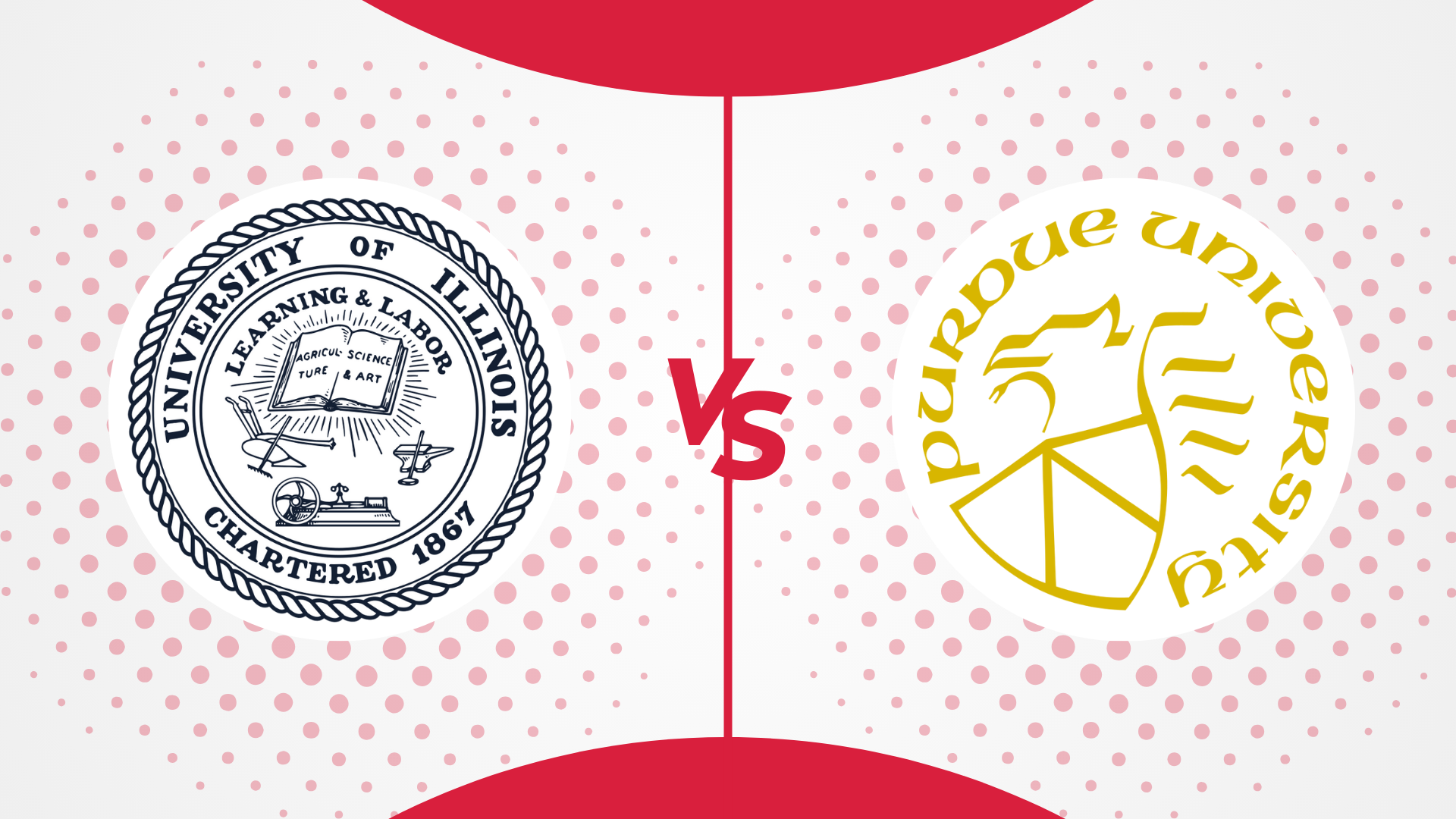
Purdue vs UIUC: How Do They Compare in 2025?
December 16, 2024 -
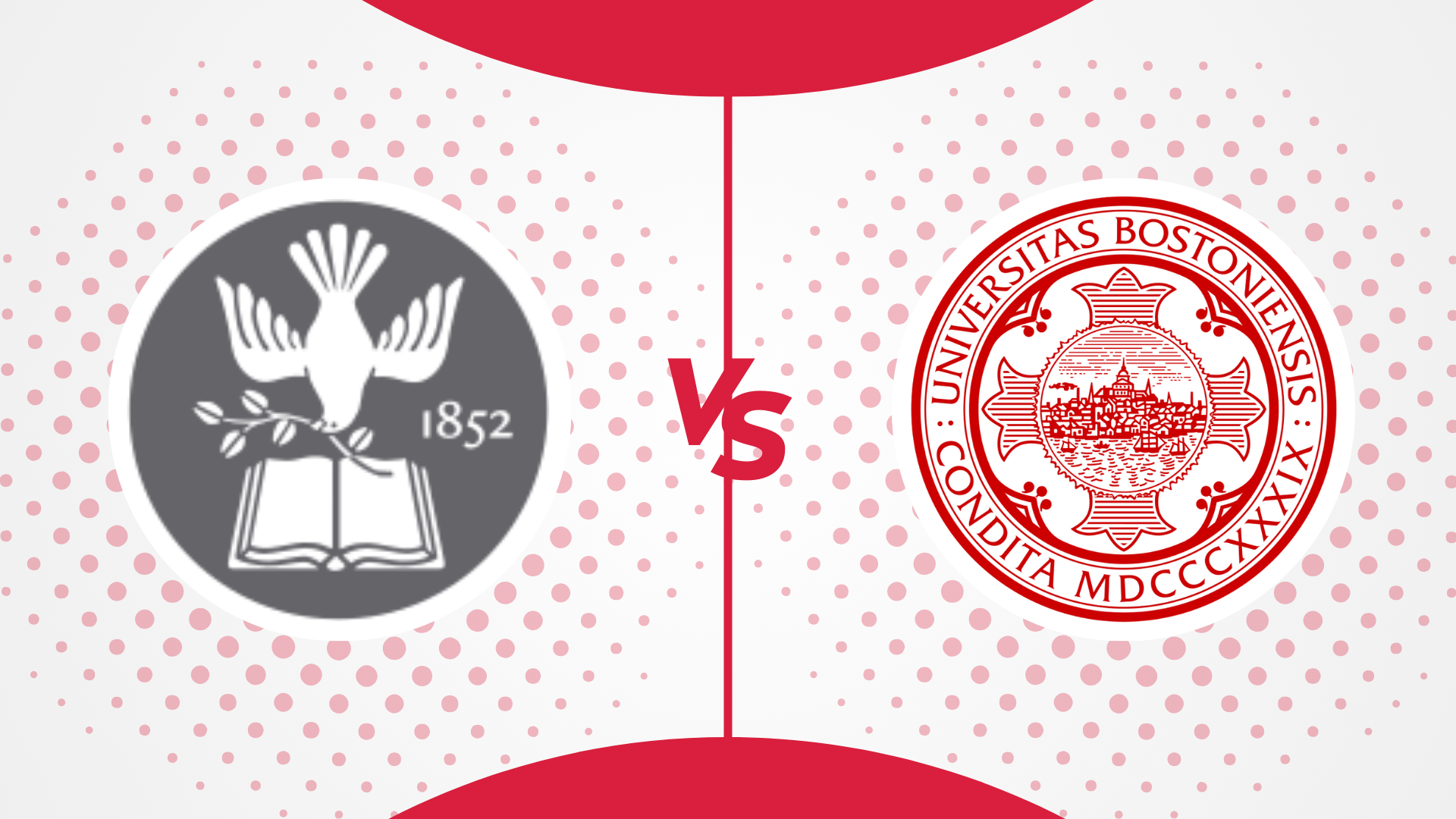
Tufts vs BU: How Do They Compare in 2025?
December 16, 2024 -
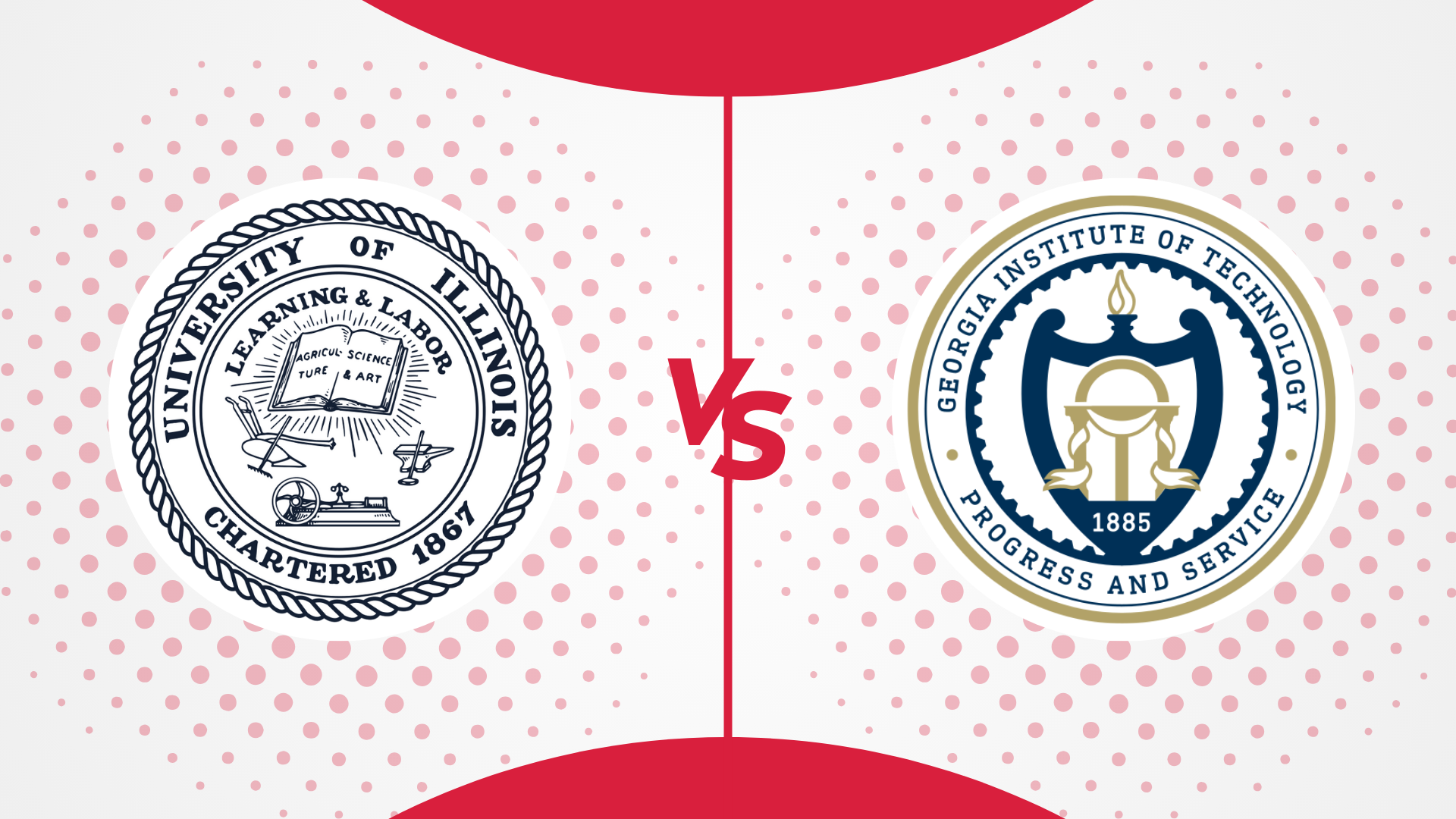
UIUC vs Georgia Tech: How Do They Compare in 2025?
December 3, 2024 -

Georgia Tech vs UT Austin: How Do They Compare? [2025]
September 24, 2024 -

UC Davis vs UC Irvine: How Do They Compare in 2024
September 10, 2024 -
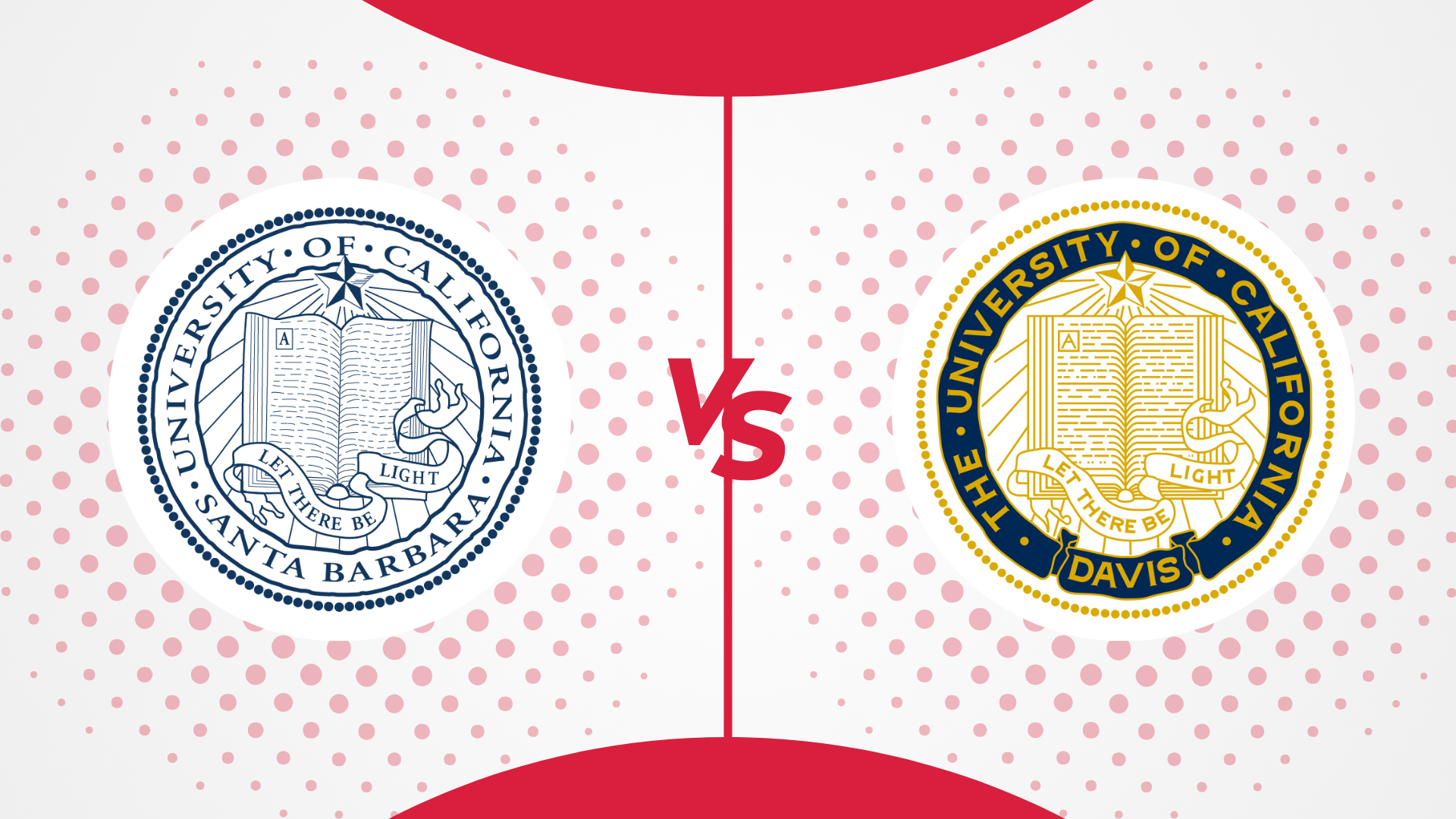
UC Santa Barbara vs UC Davis: How Do They Compare? [2024]
August 30, 2024 -
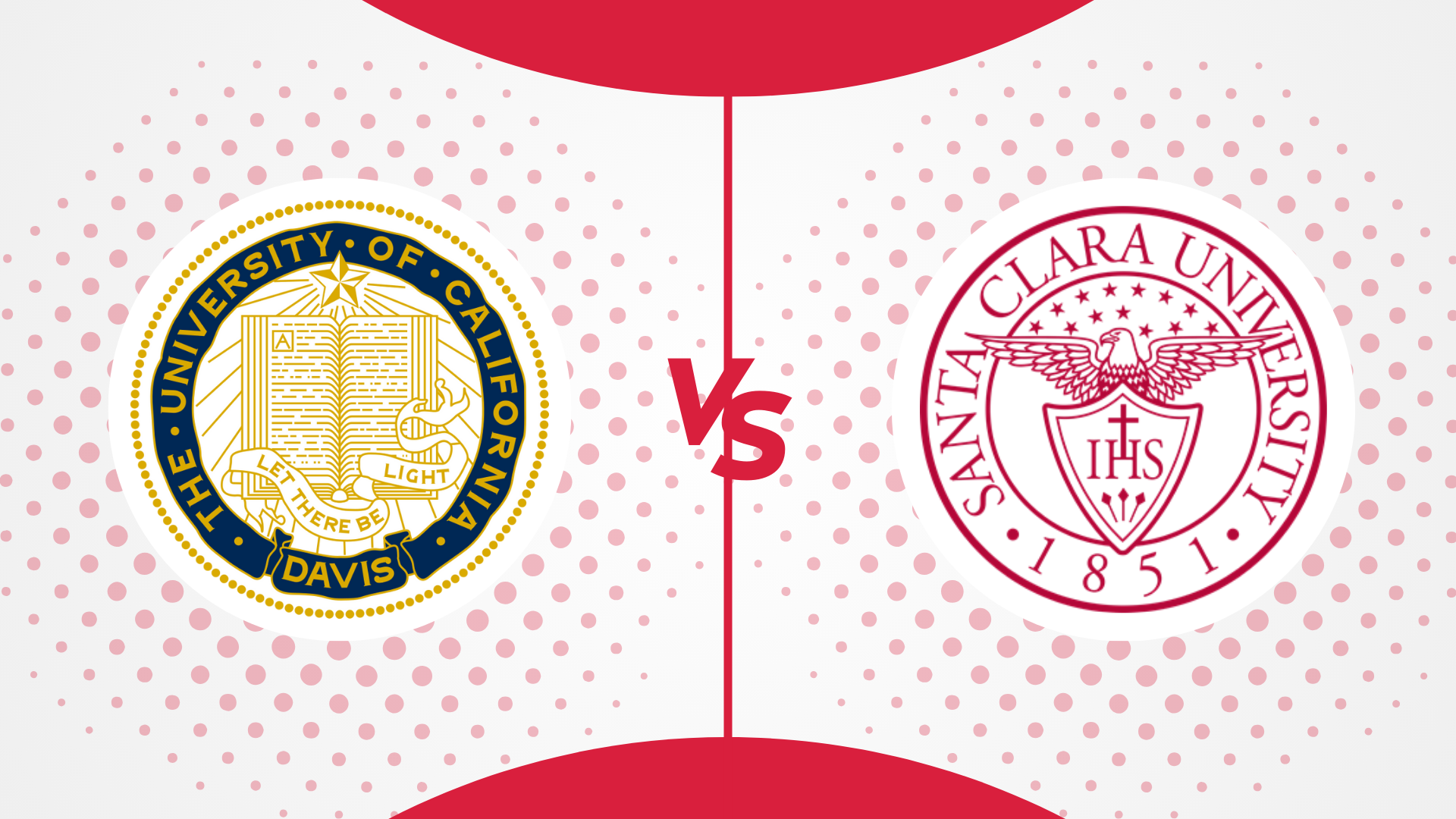
UC Davis vs Santa Clara University: How Do They Compare? [2024]
August 23, 2024 -

University of Chicago vs Northwestern University: How Do They Compare
August 20, 2024 -

Georgia Tech vs MIT: How Do They Compare? [2024]
August 7, 2024 -

Caltech vs MIT: How Do They Compare [2024]
August 2, 2024 -

MIT vs Harvard: How Do They Compare [2024]
July 27, 2024 -

Cornell vs Harvard: How Do They Compare? [2024]
July 27, 2024 -

Yale vs Harvard: How Do They Compare [2024]
July 22, 2024 -

Harvard vs Princeton: How Do They Compare [2024]
July 16, 2024 -
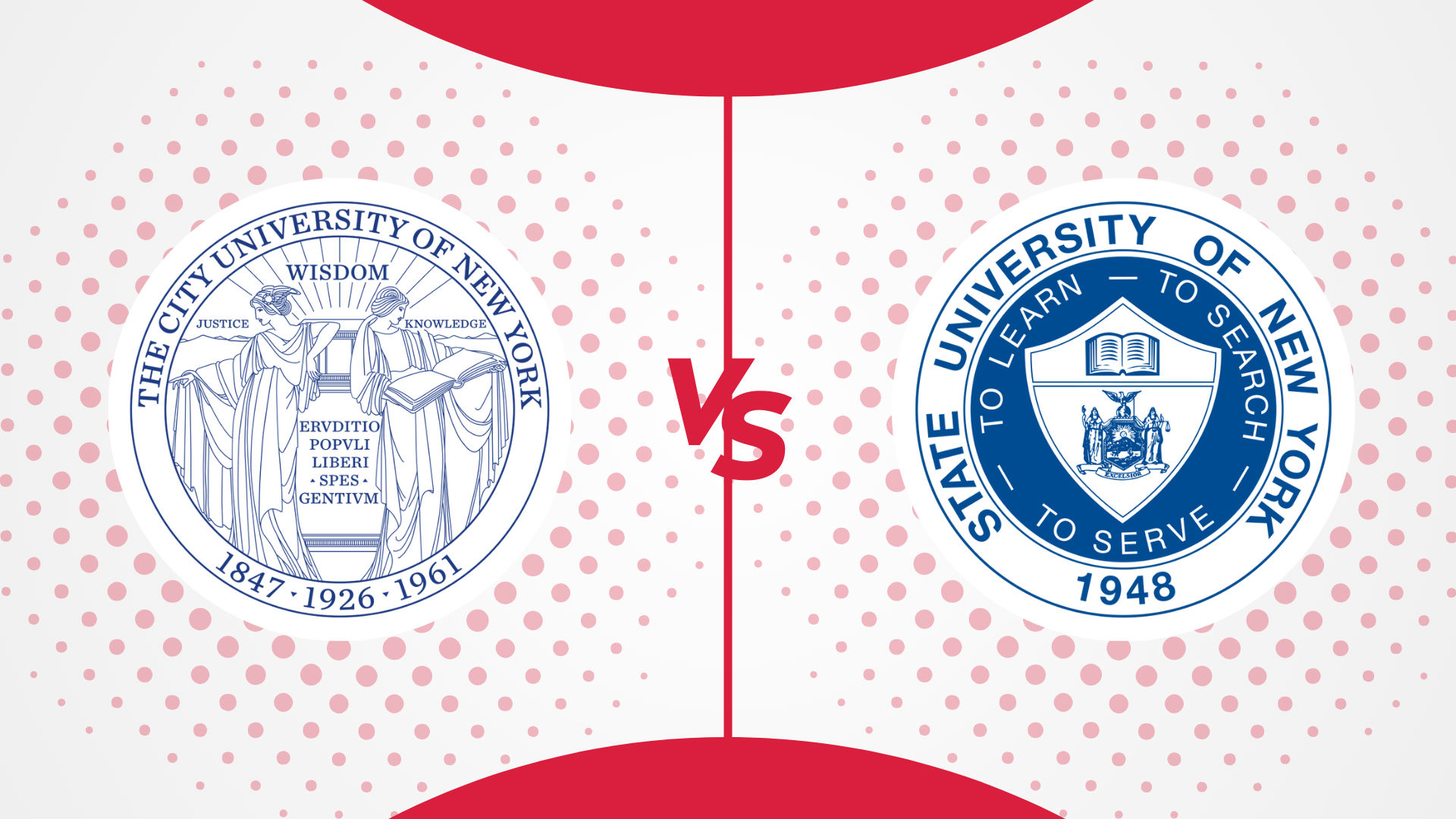
CUNY vs SUNY: Which One is For You in 2024
July 9, 2024 -
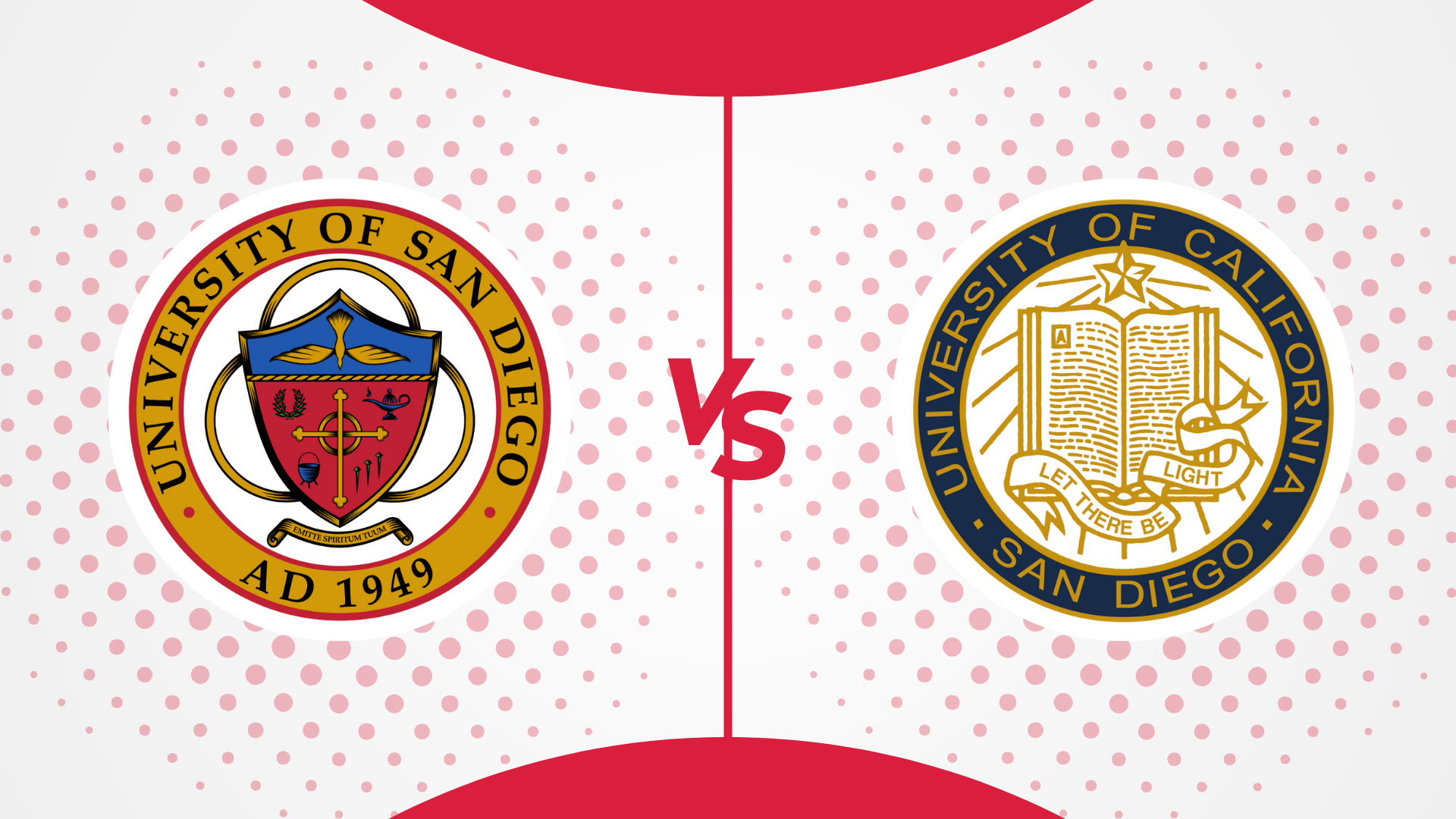
USD vs UCSD: Which one should you choose in 2024?
July 9, 2024 -
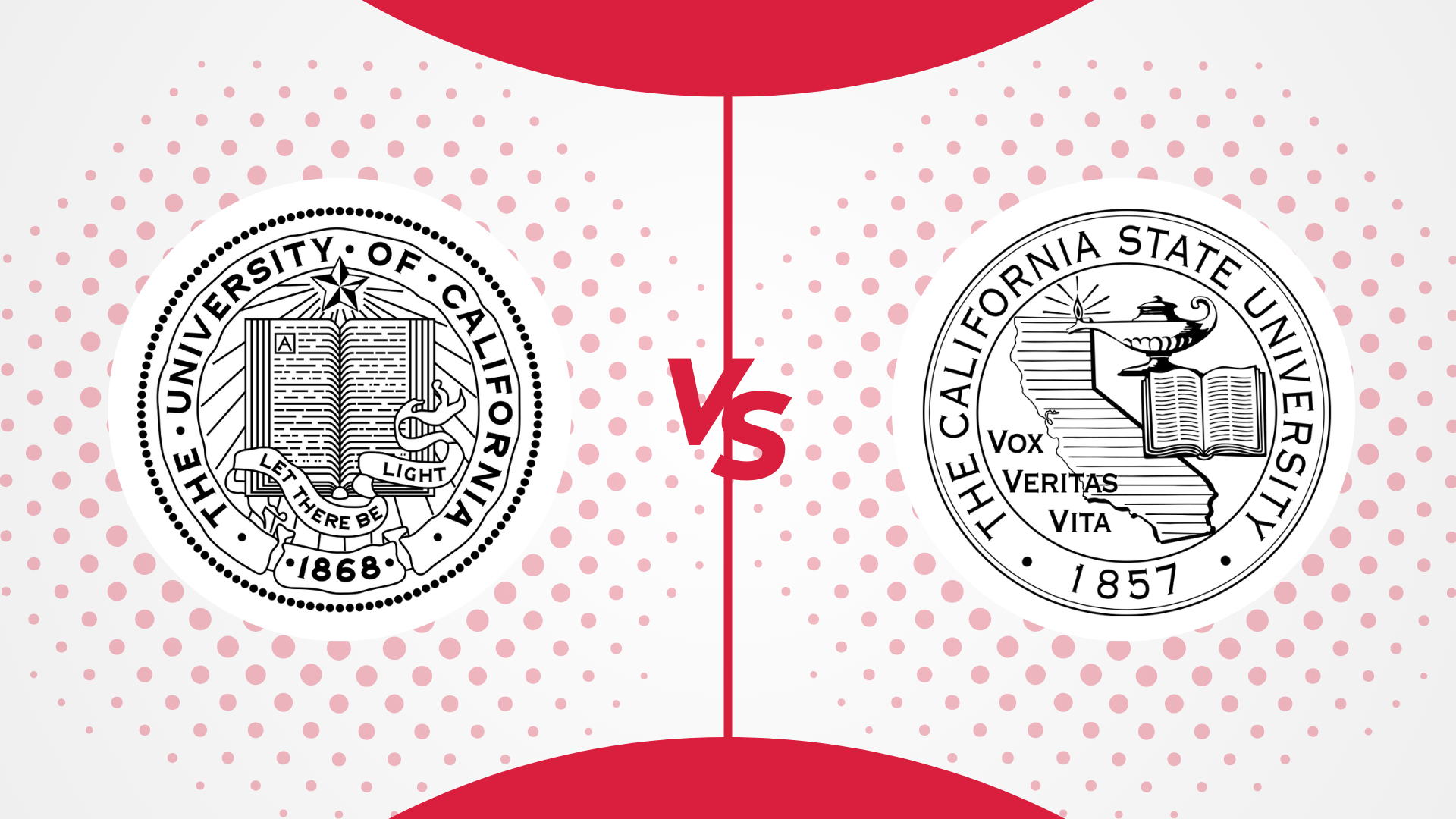
UC vs CSU: Which One is Better in 2024?
July 9, 2024 -
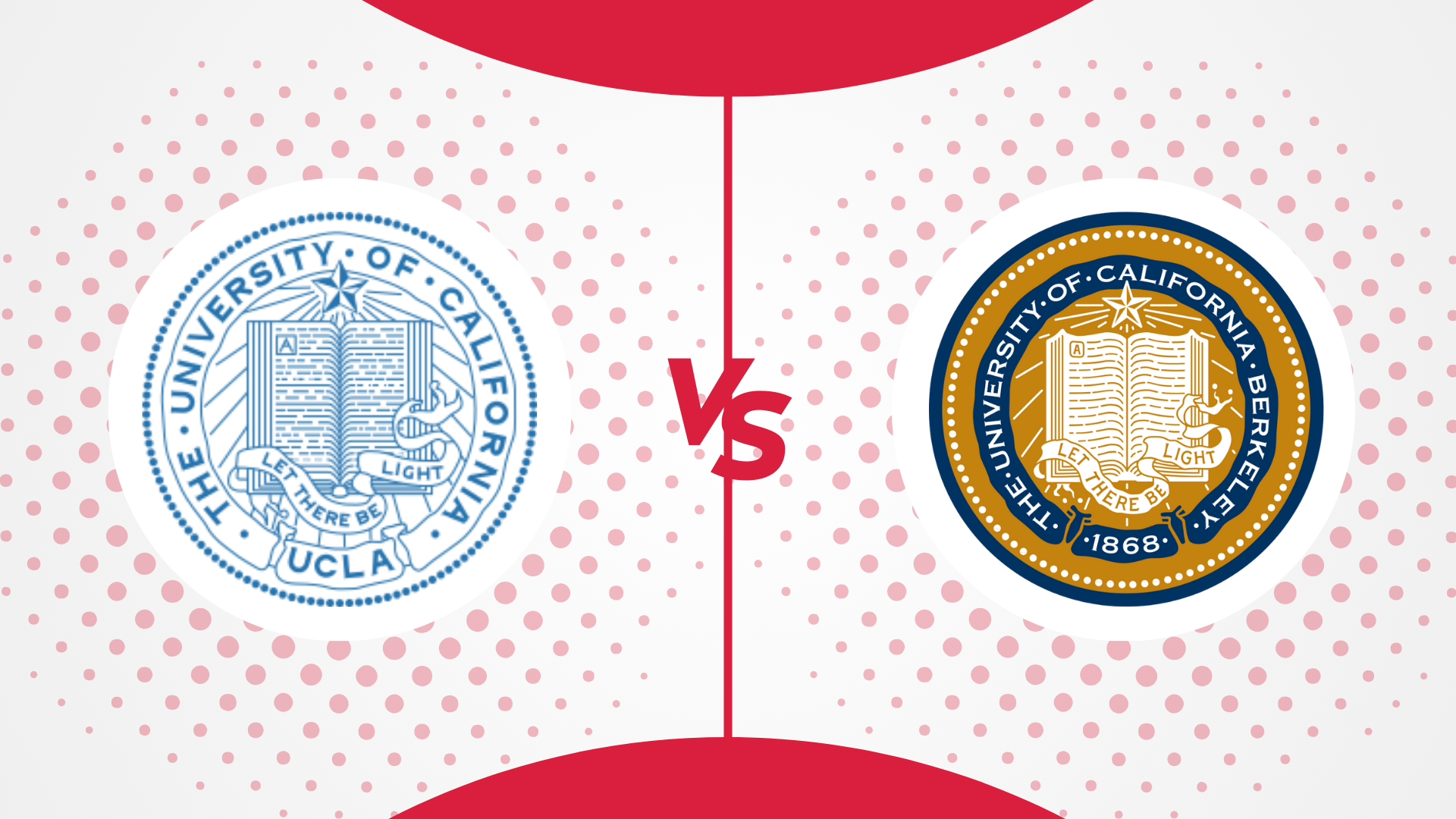
UCLA vs UC Berkeley: Which One is Best in 2024
July 9, 2024 -

University of Arizona vs Arizona State University: Which One is Better in 2024
July 9, 2024 -

Penn State vs UPenn: Which is Better for International Students in 2024
July 9, 2024 -

Northeastern vs Northwestern: Which One is Best in 2024
July 9, 2024 -

Northeastern University vs Purdue University – Which One is Better in 2024?
July 9, 2024 -

Boston College vs Boston University: Which One is the Best in 2024?
July 9, 2024 -

LSU vs UCLA: Which Is Better For You In 2024?
July 8, 2024 -

NYU vs Boston University: Which One Is Better For You In 2024
July 8, 2024 -

USC vs UCLA: Which One Is Better For You In 2024?
July 5, 2024 -
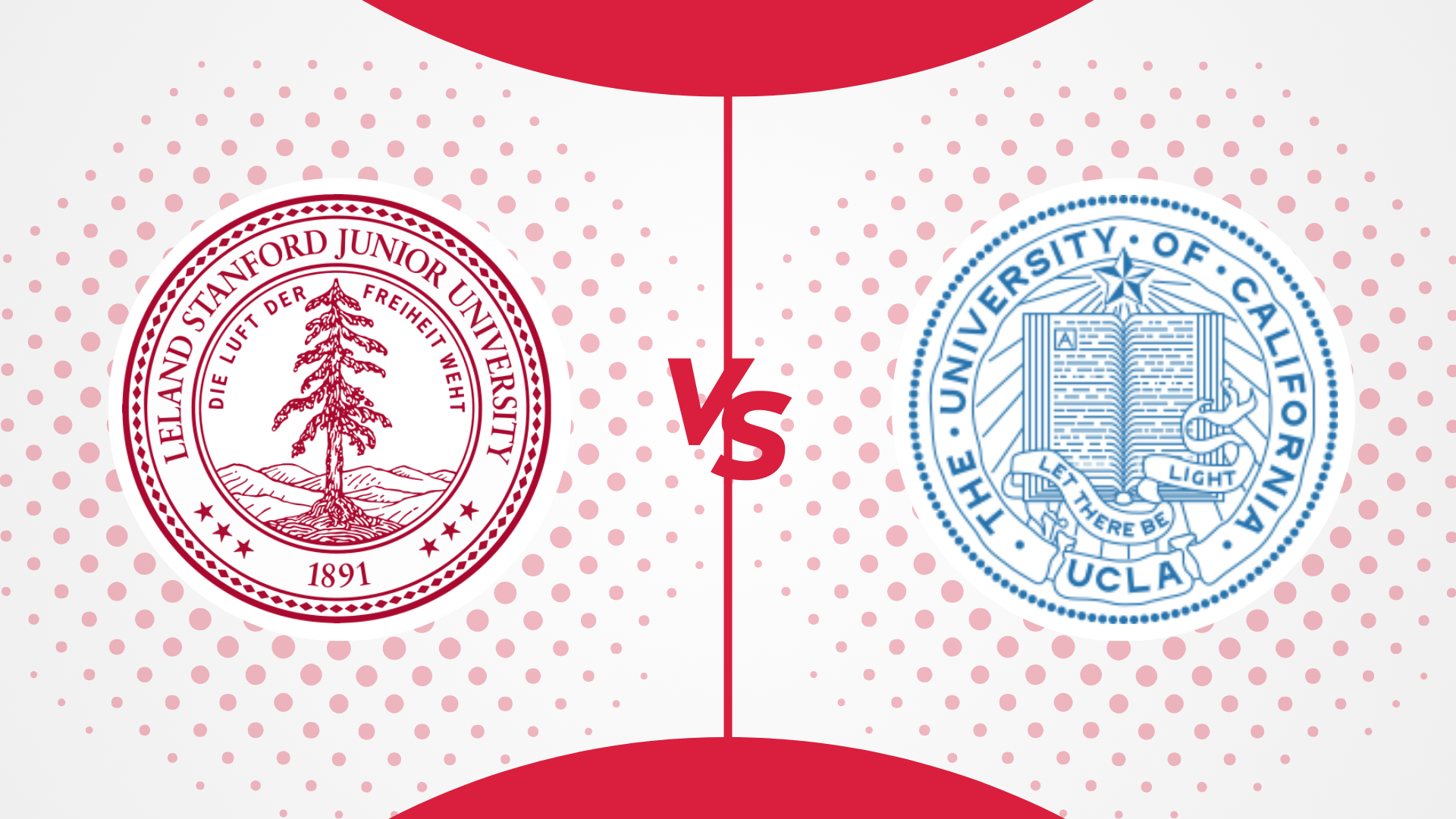
Stanford vs UCLA: Which One is Better For You in 2024
June 28, 2024 -
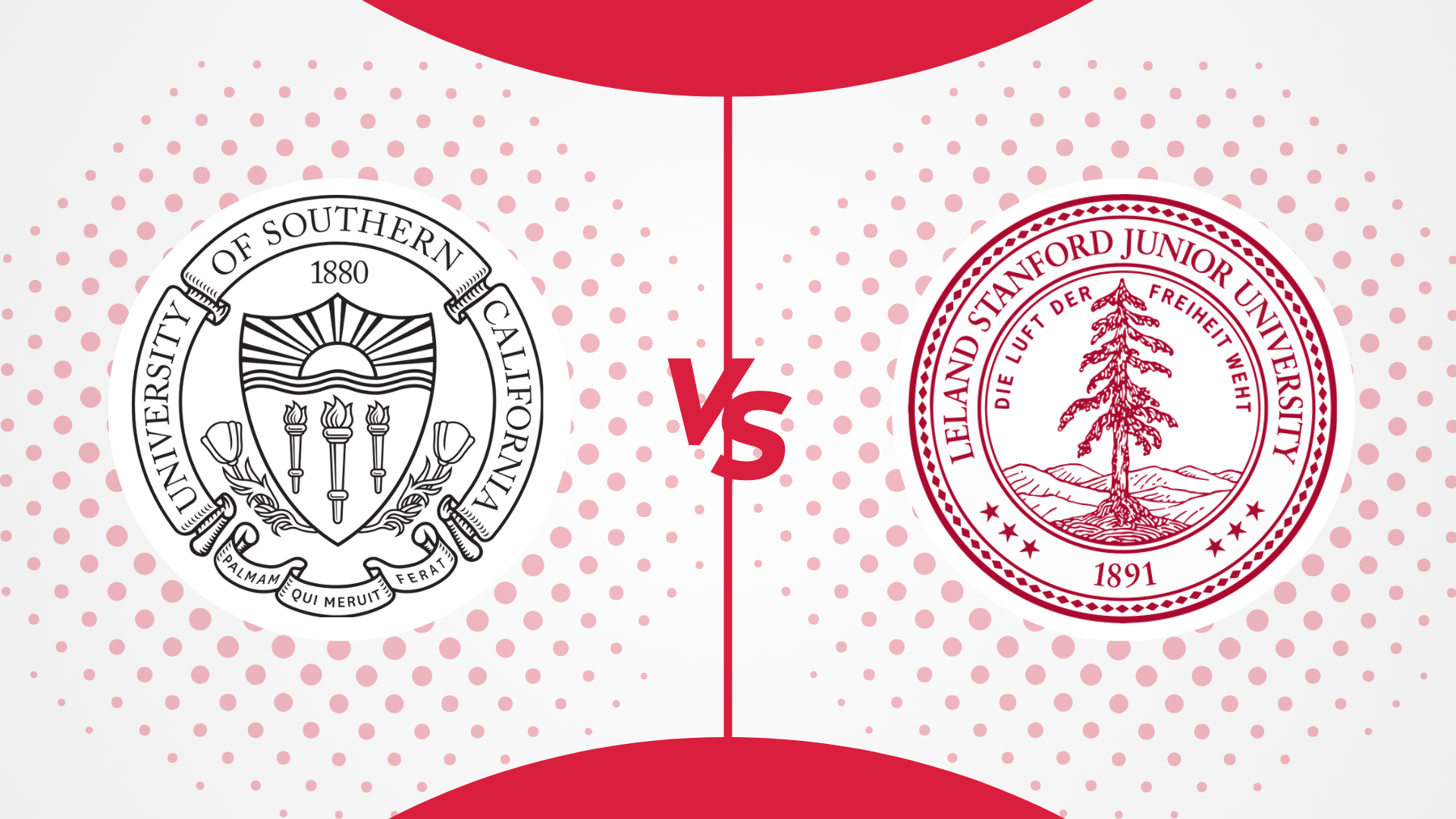
USC vs Stanford: Which One is Better For You in 2024
June 28, 2024 -
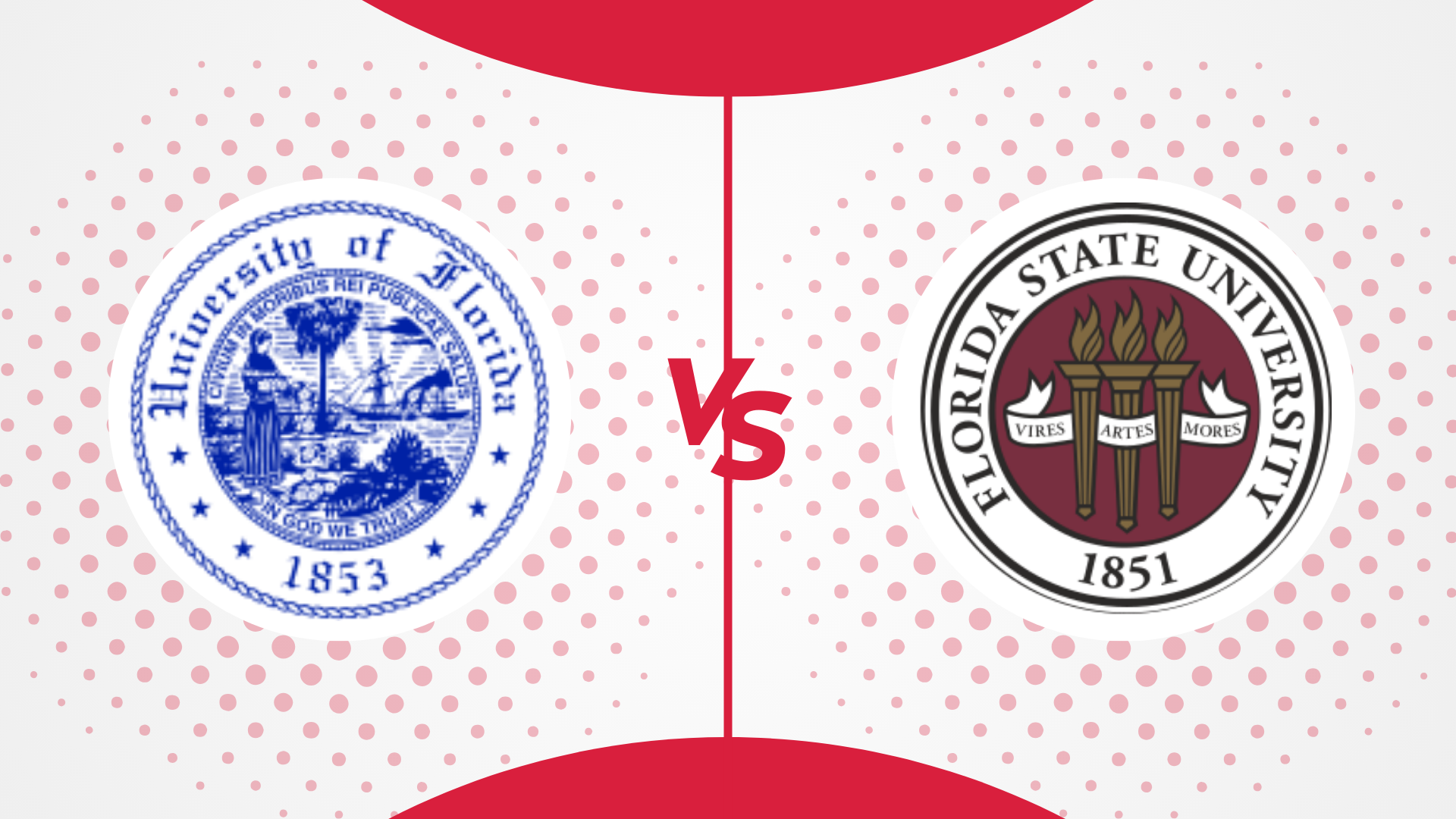
University of Florida vs Florida State University: Which One is Better For You in 2024
June 28, 2024 -

NYU vs Columbia: Which Is Better In 2024?
June 28, 2024 -

Princeton vs Columbia: Which Is Better In 2024?
June 28, 2024 -

NYU vs Cornell: Which One Is Better In 2024?
June 28, 2024 -

Boston University vs Northeastern: Which one is best in 2024
June 28, 2024 -

NYU vs UCLA: Which Is Better For You In 2024?
June 28, 2024
